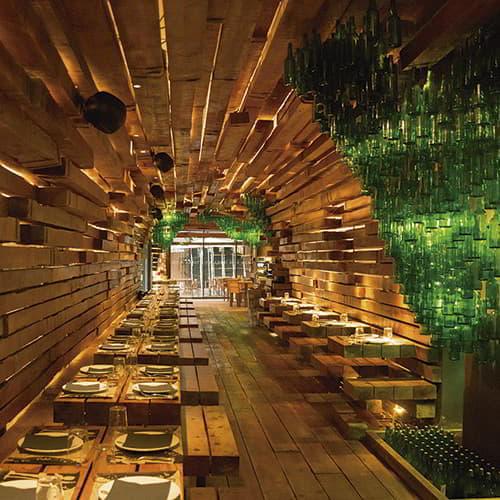Asturian cider isn't just any drink, it's the lifeblood of a culture, the pulse of a land. Its low alcohol content and its totally natural fermentation make it a drink of conviviality, with a strong social and gastronomic spirit that has taken it to the top of the Asturianía. When it's poured, we're witnesses to a hypnotic choreography. And as the stream crashes against the glass, the cider comes alive, and there's no turning back. We drink without hesitation... it's light, effervescent, and fuels conversation, joy and laughter. From this point on, time's marked by empty bottles. The "culetes" or"culinos" keep coming, our appetite grows, and it's impossible not to order some "tapines".
/documents/39908/67770/culin-sidra.jpg/5e161fed-d654-5795-0f1d-a8bed676935e?t=1737112296450
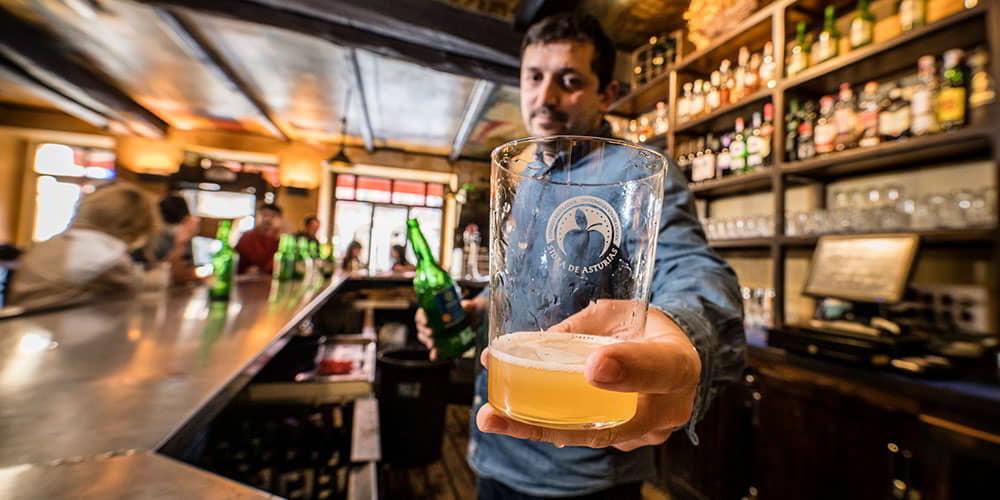
Visiting Asturias and enjoying its cider halls in good company is a truly unique way of enjoying life. This isn’t an exaggeration, cider's like that, it’s what it's all about. With roots so deeply ingrained and a legacy so vital, the Asturian Cider Culture achieved global recognition in 2024: Intangible Cultural Heritage of Humanity by UNESCO.
The history of cider in Asturias
The history of cider is the chronicle of a millenary drink that has accompanied the lives of Asturians right from the very beginning. The geographer Strabo mentions its consumption by the Asturians in the first century BC. The Romans embraced and spread this cherished tradition, and it became even more established during the Middle Ages, thanks to communal "llagares" (cider cellars) managed by monks and farming communities.
/documents/39908/67770/llagar.jpg/86af90da-76e1-0454-92de-f201d6f325f7?t=1737115651075
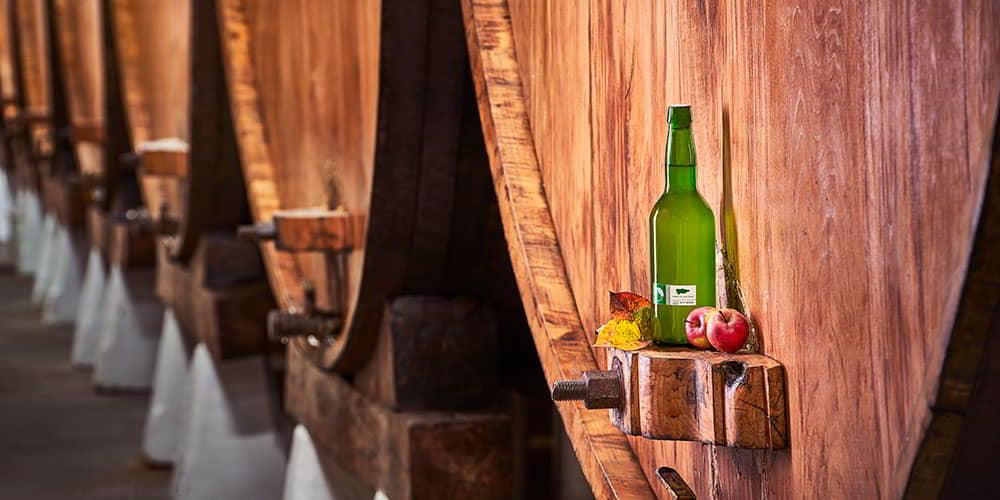
At the end of the 19th century, population growth and incipient industrialisation drove the expansion of cultivation and cider became a cheap alternative to wine. It ceased to be an exclusively peasant drink and began to be in demand in towns and cities and to be consumed in chigres - a term that in Asturias is used interchangeably to refer to taverns, inns, taverns or bars - and which takes its name from an enormous corkscrew; an old contraption used to open bottles more quickly.
Chigres were spots created for the working class to gather and enjoy (and they still are). They played a key role in raising awareness and fostering the workers' movement in Asturias. In towns such as Mieres del Camín, for example, where mining required a large working class, a high consumption of cider became a part of life. The emerging bourgeoisie, linked to mining and industry, also adopted cider as part of their regional identity, promoting its commercialisation both inside and outside Asturias.
/documents/39908/67770/escanciando-sidra.jpg/faf58724-bfc4-360e-6487-9a087ec18610?t=1737118274560
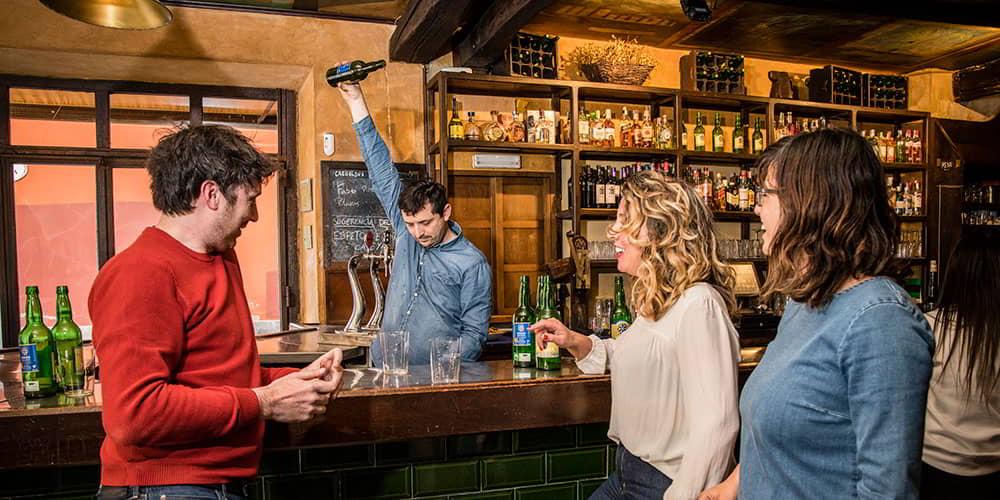
Asturias currently produces 80% of Spain's cider, with more than 40 million bottles a year. The story of cider is more vibrant than ever, thriving in increasingly productive apple orchards (or "pumaradas"). In this 21st century, moreover, the consolidation of cider is stronger than ever thanks to the Protected Designation of Origin "Cider from Asturias" (recognised as such in 2003 by the European Union) and with the most recent declaration of cider culture as Intangible Heritage of Humanity by UNESCO (year 2024).
How is Asturian cider made?
Asturian cider production follows a strict cycle linked to nature and the seasons. It all starts between October and November, when the fruit ripens, and harvesters carefully comb through the orchards, selecting the finest apples.
/documents/39908/67770/lavado-manzana.jpg/d68d92bc-c956-cfb6-bf8d-10884ad3f6c6?t=1737118277256
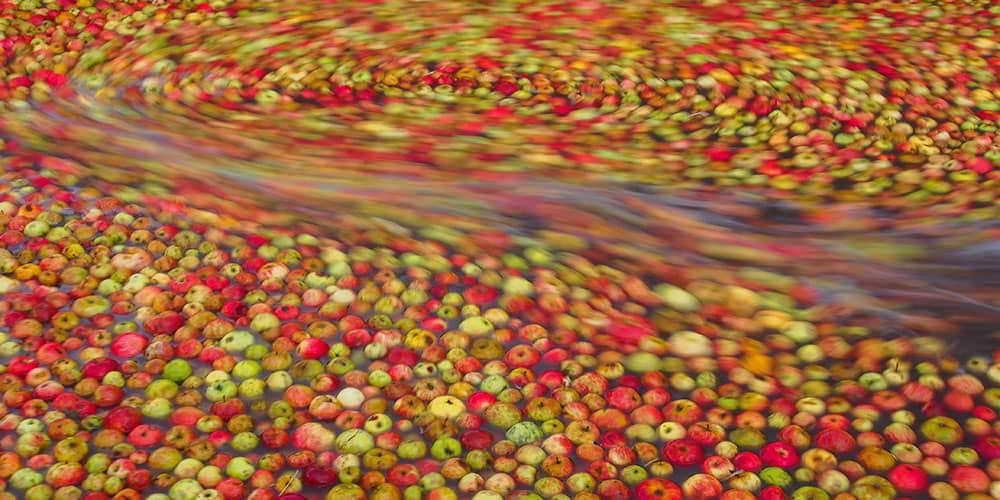
How many varieties of native apple are there?
Cider isn't made from a single type of apple. Asturias has almost 500 varieties of this fruit, 76 of which are recognised under the Protected Designation of Origin (PDO), "Sidra de Asturias". Each variety has its own character, contributing to the cider's unique alchemy—infusing it with vitality, crisp freshness, and a bold edge.
According to their flavour and cider-making function, three main groups of apples can be defined: sour, sweet and bitter or tannic. The first ones provide freshness and acidity (with favourites like Raxao, Xuanina, Perico, and more); the sweet ones provide the basic sugar for fermentation (De la Riega, Verdialona, Ernestina, etc.); the third group gives body and structure to the cider with its characteristic bitterness and greater quantity of tannins (Regona, Blanquina, Limón Montés, etc.).
/documents/39908/67770/manzana.jpg/a970ca5a-881c-55d5-382b-164f8f233ffa?t=1737357295872
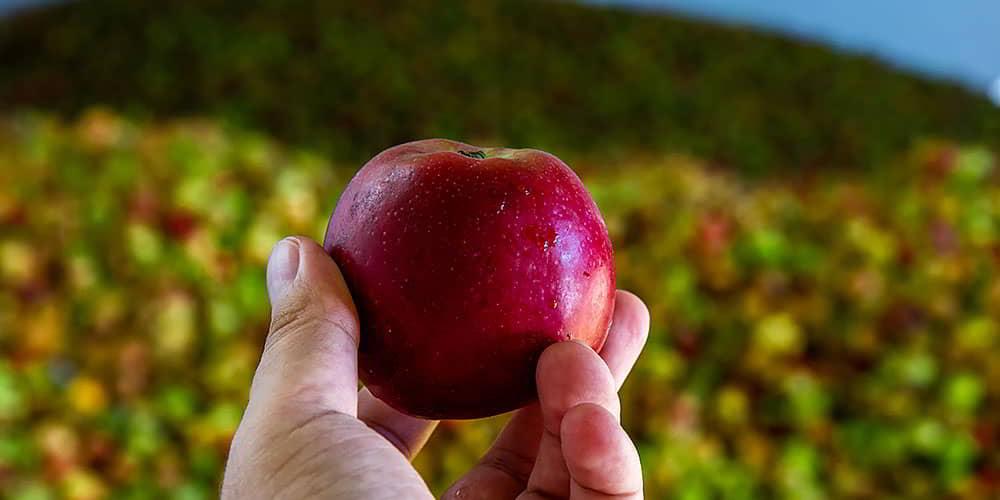
Each cider maker combines different proportions of these groups to obtain a cider with the right balance, following the techniques and knowledge that have been passed down (and improved) from generation to generation at all times. This is why the aftertaste of Asturian cider lingers in the mouth in a unique way, and why it’s also practically impossible to make outside the meadows and cider mills of the Principality.
Fermentation and maturation
Natural cider’s journey begins within the cider-making facilities. First, baskets, boxes, or sacks loaded with apples are gathered. Then comes the "mayanza", the action of crushing them, breaking up the pulp into smaller pieces to prepare for pressing. In the old days, and still in many homes today, the harvest was pounded with large wooden mallets. It was a job that required the help and determination of several mayadores (apple crushers). Mechanical mills are now available for this purpose. The wooden beams of the old presses have also given way to modern hydraulic presses that extract every last drop and leave the unproductive "magaya" (the dried, caked residue of the apples) aside.
/documents/39908/67770/prensa.jpg/c1e3a474-b22a-20a7-40ae-7bc0305b6b3a?t=1737358295911
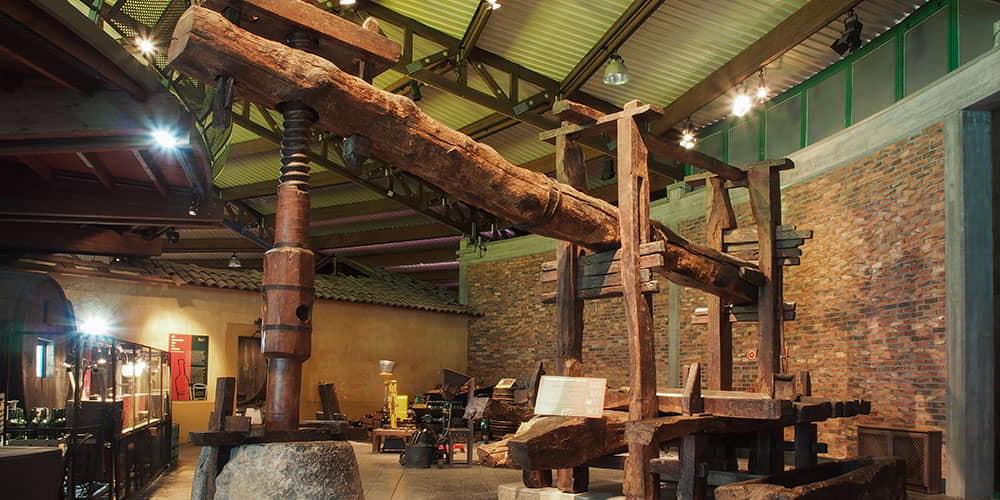
The must is then stored in large chestnut, oak or steel casks. Fermentation is a one-way ticket that lasts at least three months; Inside the barrel, the yeasts come alive, slowly consuming the sugars and transforming them into alcohol, aromas and cider. At first, the process is almost audible, as the cider fizzes with energy, releasing bursts of carbon dioxide. Then it calms down, and it slowly clears.
The time of maturation has come:cider needs calm, balance and an unhurried wait. It's then racked to clean it of impurities and aerate it. The experienced "llagarero" (cider maker) dates the progress of this maturation process by means of the aromas released and by tasting the flavour, until one day, without anyone being able to tell the exact time, the cider's ready.
The art of pouring
Once bottled, the cider isn’t served like any other drink, it’s thrown into the air from just the right height, with an outstretched arm and a steady gaze, without hesitation, with no margin for error, so that it breaks right against the rim of the glass with a fleeting effervescence, bringing the cider to life. This traditional way of pouring natural cider emerged in Asturias sometime in the 19th century and involves a ceremonious staging, skill and dexterity that is continually put to the test in regional cider pouring championships.
The "behaviour in the glass" of cider includes concepts such as "pegue", "espalme" or "aguante", relating to sensory issues such as the instability of the foam, its adherence to the glass or the speed with which the carbon dioxide gas is released after pouring. If these issues are tackled well, not only is the cider filled with oxygen and freshness but also elevates the entire cider-drinking experience.
/documents/39908/67770/escanciado-sidra.jpg/2524e734-eaad-9662-5e04-2220682b54c7?t=1737359687417
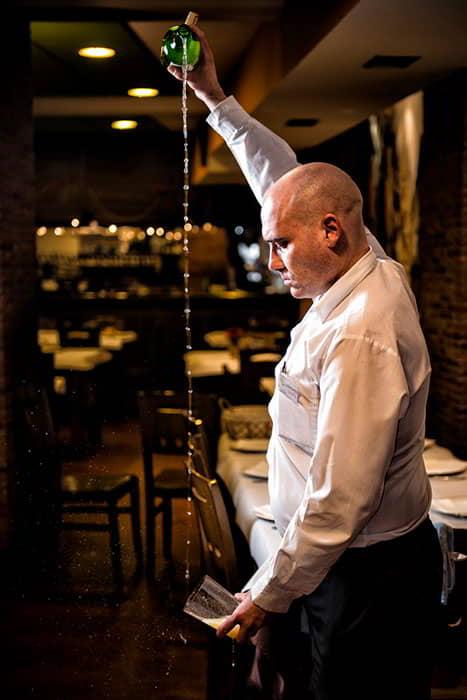
The pouring of cider goes beyond the mere technical gesture however; it's a social act, a collective ritual that breaks down barriers and brings people together. In every cider hall, in every cider mill, in every "prau" party, the "escanciado" always gives meaning to the meeting. Traditionally, a single glass represented the unity of the group, passed from hand to hand in a gesture of trust and community. Today, although everyone has their own glass, that essence is still around: Drinking cider is a shared experience where waiting your turn makes it all the more enjoyable.
You never pour for yourself first; you pour for others. Each participant in the ritual drinks the same amount each time: just a couple of fingers’ worth, "un culete" or "culín". There's no rush: we drink, we talk, we laugh, and the cider pourer does it again and again to continue where we left off. When you throw part of this "culín" on the floor, it isn’t a waste, you're only cleaning the glass of impurities and pay homage to this ancestral practice of cider drinking.
/documents/39908/67770/interior-sidreria.jpg/ebf1efa6-c65f-5455-d6eb-5e5bc43daaaf?t=1737361178301
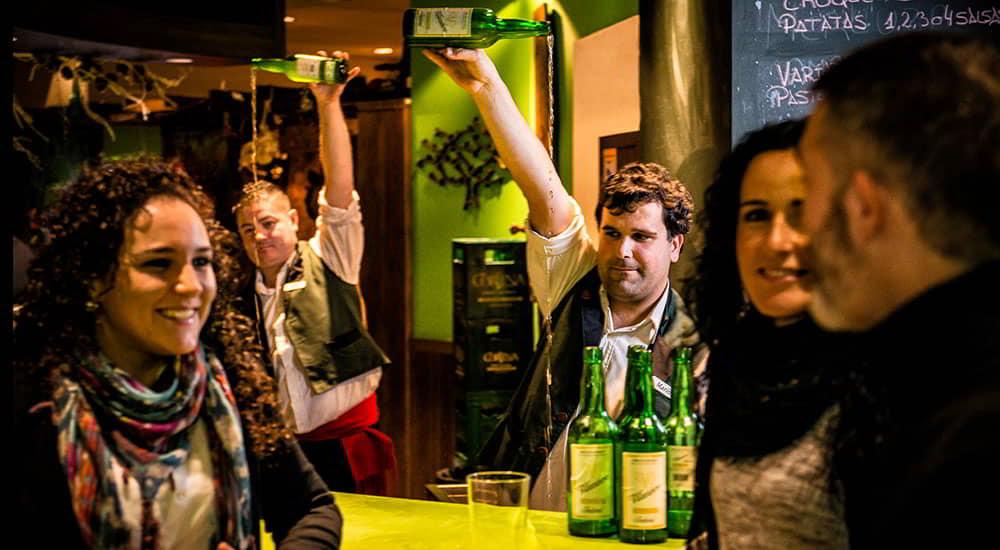
There's a wide-ranging cider vocabulary that you need to know if you want to become fully integrated in the cider environment. We strongly recommend that you never say "sidriña", and that if you have to order at the bar of a cider hall you say it like this: "ponme una botellina" ("give me a bottle").
Cider halls in Asturias: iconic places
You can find them all over the Principality as temples of a living tradition, iconic spaces where cider culture finds comes to life. Cider is the star here; it’s the thread that runs through all the chats and encourages Asturian-style sociability.
The cider halls have good professionals who, as well as pouring cider well, are capable of maintaining a "sidrera" ("cidery") complicity with their customers. They're venues that are usually well decorated, in the wake of those genuine chigres, with light-hearted (sometimes cheeky) gatherings, where some people would burst into song ("cancios de chigre") accompanied by a "gaita" (bagpipe).
/documents/39908/67770/sidrerias-de-asturias.jpg/1849173b-14d5-4928-c20c-f9a1d92ac373?t=1737375171789
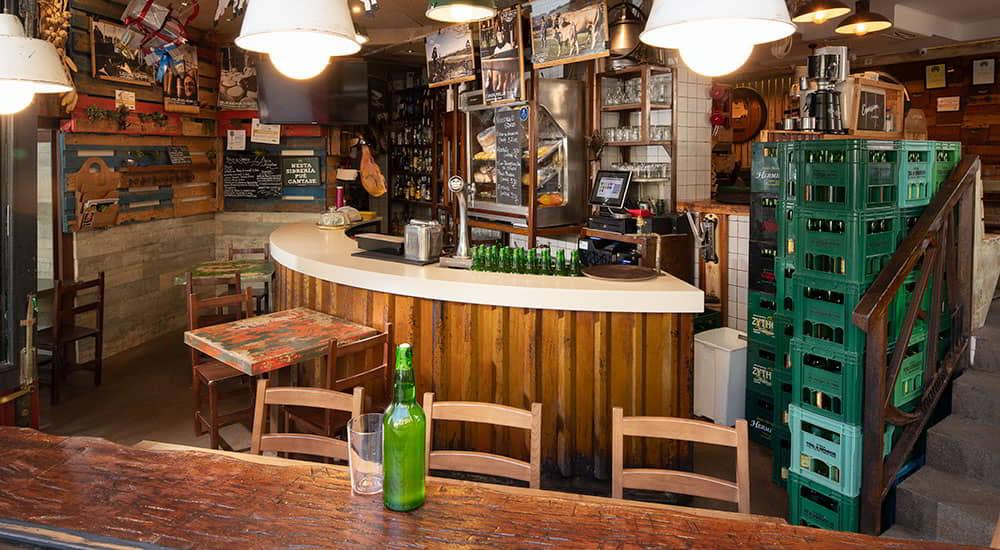
A self-respecting cider hall will also sell different "palos" of cider, those they think have the best flavour and aroma profiles or the ones that best represent their favourite cider makers. And you can't miss the good food in the form of tapas and typical dishes, especially those that allow a better pairing with natural Asturian cider.
As of 2017 there has been an exclusive brand"Sidrerías de Asturias, Natural Quality" granted by the Principality's Administration to those establishments that, in addition to their link with natural cider, meet certain quality conditions and undergo periodic evaluation. Consult the cider halls that form part of this quality mark.
Asturian Llagares
Some cider presses, either in their traditional facilities or in annexed buildings, often also serve as a restaurant or cider hall in their own right. They organise guided tours and cider tastings accompanied by typical products (potato omelettes, chorizos a la cidra, lacón, tortos, etc.). Ethnographic and gastronomic routes are also planned in the surroundings of these cider mills, as is the case with the popular Cheese and Cider Route in Asiegu (Cabrales). What truly defines these spaces are the so-called "espichas", festive gatherings where people drink cider directly from the barrels, accompanied by Asturian tapas and music.
If cider tourism is your thing, you should know that the areas most frequented by cider lovers are the outskirts of Gijón/Xixón and Oviedo/Uviéu, the councils of Villaviciosa and Nava, as well as Siero, mainly in the Tiñana area.
/documents/39908/67770/espicha-llagar.jpg/877e9cae-eac1-5952-131a-b06d1e33911f?t=1737369877776
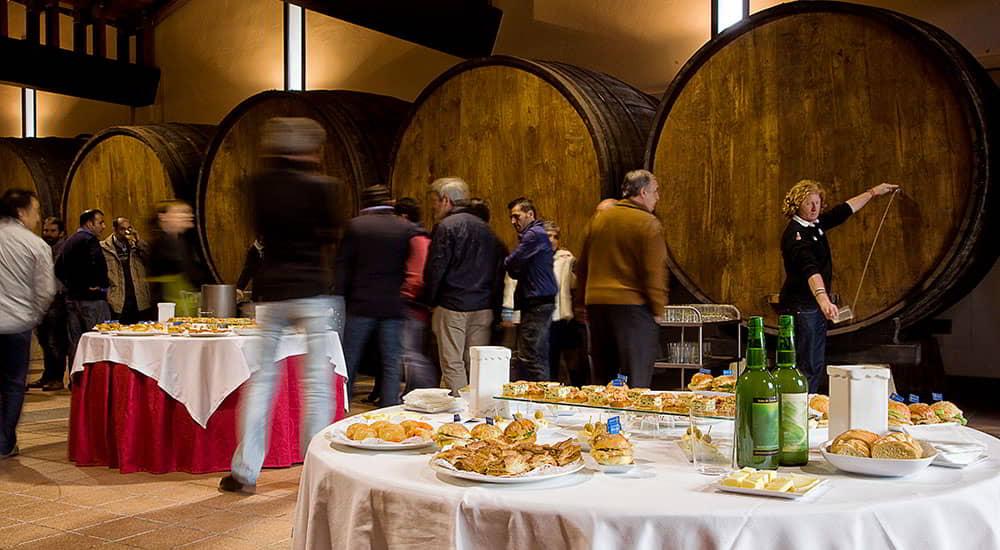
Cider in Asturian gastronomy
Cider never comes on its own, it comes by dishes that are an homage to the land of Asturias: tortos de maíz (fried corn flour bread) with minced meat and fried eggs, tasty Asturian cheese boards, chorizo cooked in the cider itself, a good helping of sea urchins, a 100% Asturian "cachopo" (breaded beef fillets with Iberian ham and cheese), etc.
Cider refreshes the palate and elevates the flavours of iconic dishes like fabada (bean stew), enhances the richness of Cabrales cheese, and adds a crisp freshness to fish and seafood.
/documents/39908/67770/chorizo-sidra.jpg/433dcb5c-4953-2831-4291-a0072fb67bcd?t=1737370683736
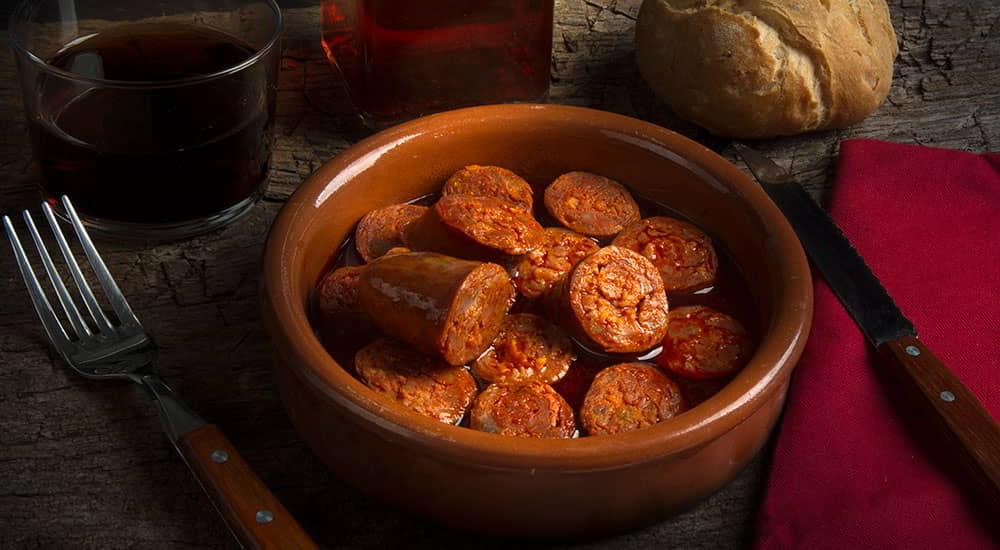
But beyond pairing, cider also acts as another ingredient in the kitchen, adding its acidic and fruity touch. There are classic recipes that have always used it. Chorizo a la sidra (Asturian cider-cooked chorizo), for example; or hake in cider, clams in cider, etc. A good glass of cider can be served with many different dishes: "chipirones afogaos" (baby squid), a brothy rice dish, a good stew with Asturian veal, cod, mussels, the dressing for oysters... The possibilities are endless, especially now that cider, with its new variations and expressions, is gaining unprecedented versatility in the culinary world.
How many types of cider are there?
Although the undisputed star of the table is still traditional natural cider,natural sparkling cider has also reached great heights on the market, with a slightly higher alcohol content, and is common at celebrations. There's also table cider or new expression cider, which is filtered to remove sediment. It doesn't need to be poured, it's designed to be consumed in any type of glass, and it goes perfectly with fish and seafood from the Cantabrian Sea. Another possibility is ice cider, which is obtained by concentrating the must by freezing it and is enjoyed in small quantities; ideal to go with cheeses and desserts.
/documents/39908/67770/sidra-brut.jpg/d22ae340-524b-26f8-7d94-a9b51c6889f6?t=1737376508607
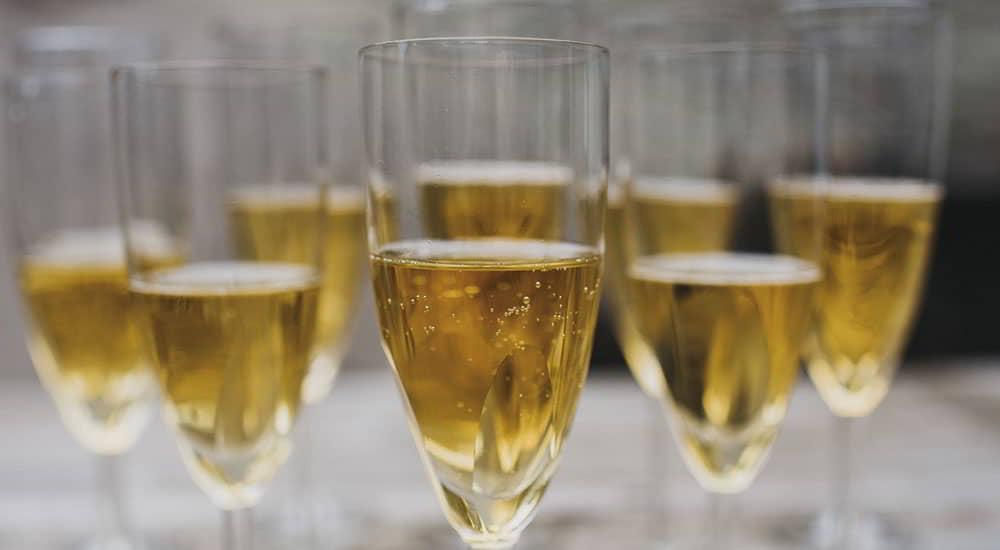
We can’t forget the sweet cider, or unfermented cider, whose consumption is exclusively seasonal (only for a few weeks between October and November). It’s drunk at the same time as we eat Asturian chestnuts in the famous "amagüestos" - autumn celebrations that can be enjoyed in any corner of the Principality.
Cider-related events and festivals
Let's start at the beginning, when the apple trees are in blossom: The so-called Semana de la Floración del Manzano (Apple Blossom Week) is usually celebrated every year coinciding with the May bank holiday in the Cider Region. This is a cider-growing area which includes the municipalities of Bimenes, Cabranes, Colunga, Nava, Sariego and Villaviciosa. A full programme of activities, with a particular focus on guided tours to farms (pumaradas) during the peak of their blooming season. A spectacle of nature.
A month later, at the beginning of June, there's the Cider Tasting or tasting of the first cider of the season. It's held in the "Bulevar de la Sidra", in Gascona Street in Oviedo/Uviéu. A large-scale celebration that highlights the strong links between the capital of Asturias and cider culture.
/documents/39908/67770/preba-de-la-sidra.jpg/96f8b584-2062-60d3-fbc4-6fb0dca8f83a?t=1737376862790
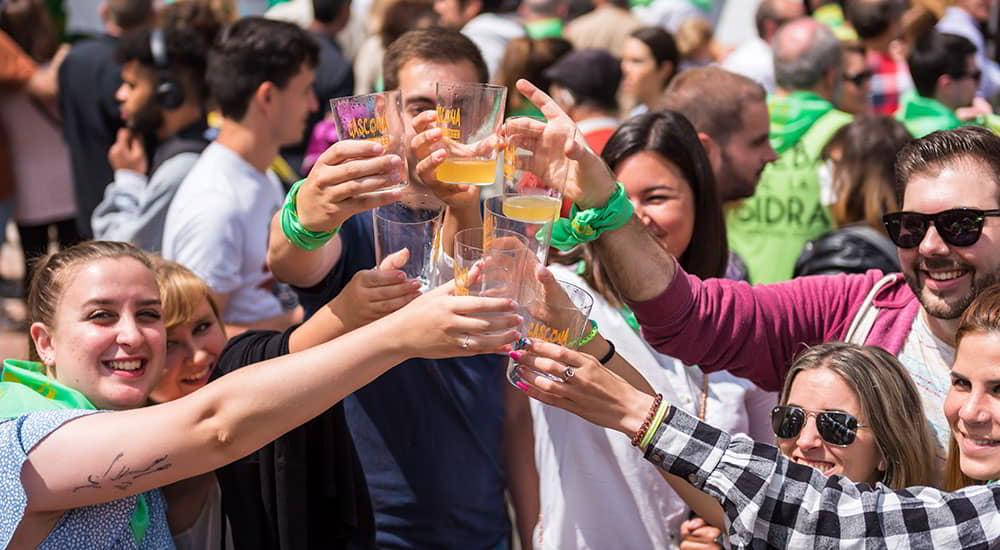
Moving on to the next month, you can go to the famous Nava Cider Festival in July, Nava being one of the proudest cider towns in Asturias (not for nothing it's the headquarters of the Asturias Cider Museum). Declared a Festival of National Tourist Interest, throughout the week there are different activities where cider is the star, such as the Grand Final of the Best Natural Cider Competition or the International Cider Pouring Competition.
The Natural Cider Festival takes place in Gijón in August. For several days the city's full of cider activities: cider pouring competitions, tastings, and even a Guinness record, thanks to thousands of pourers coming together on Poniente Beach to take part in a simultaneous cider pouring.
/documents/39908/67770/record-guinness-escanciado.jpg/a45e8ce8-5d68-4809-06ae-9366aebd37cd?t=1737379149588
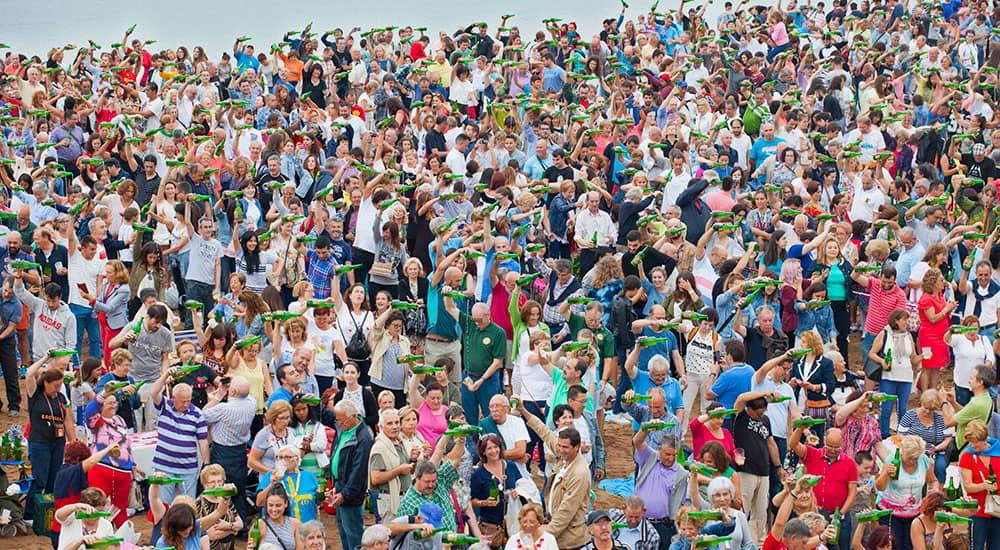
October sees the arrival of the Apple Festival of Villaviciosa. It's held every two years with an extensive festive programme. Here, you can attend tastings of the finest ciders and exhibitions where the apple, in all its many varieties, takes centre stage as the undisputed star.
The Regional Championship of Escanciadores (pourers) has been held in Asturias since 1993. Throughout the year there are a series of qualifying rounds throughout Asturias. The Regulatory Council of the Protected Designation of Origin Cider from Asturias is one of the main sponsors and promoters of a competition that seeks to promote the figure of the cider pourer and to establish common criteria for those who carry out this activity professionally. The Control Board also awards the annual prize for the Best Natural Cider of Asturias.
On the other hand, Sidraturismo Asturias (Asturias Cider Tourism)(opens in a new tab) is a cider club that can bring you closer to these and other cider events, as it promotes and spreads the Asturian cider culture with different actions and tourist activities throughout the year. You can book some of them online.
Recognition and awards for Asturian cider
Asturian cider, more than a drink or a quality brand, is a way of life that the Asturians have successfully exported and which has been widely recognised and rewarded.
As of 2003 natural cider has had the Protected Designation of Origin "Sidra de Asturias". Since then, the Regulatory Council has been supervising and guaranteeing that the apples used in the production process are Asturian, and that all the required quality controls are carried out. Protected Designation of Origin cider is marketed in bottles identified with the label of the producer together with the back label of the Regulatory Council and a numbered guarantee seal.
/documents/39908/67770/botellas-sidra.jpg/e44d53e6-4940-0f21-d2d8-ade08bbb4612?t=1737452692465
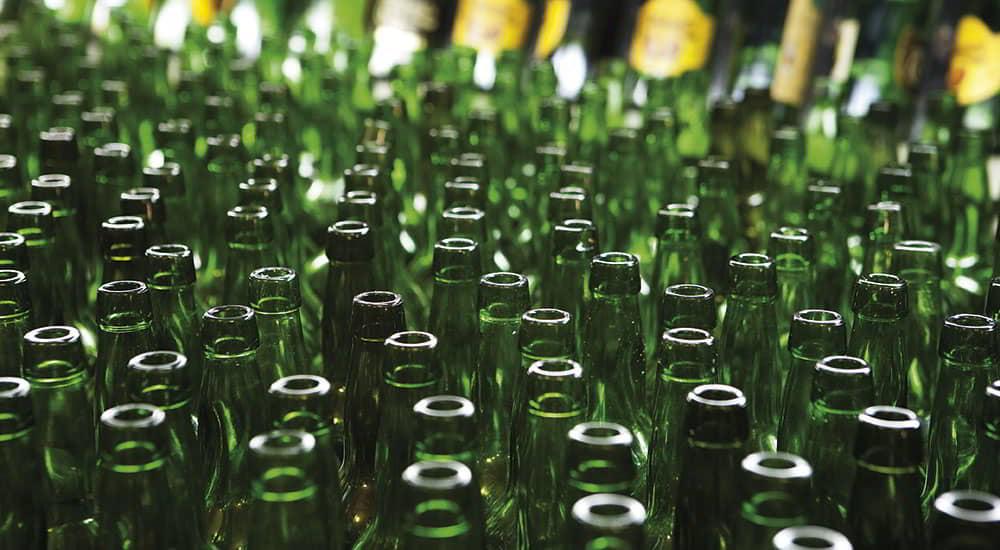
Not all cider produced in Asturias is protected by this designation. For this to happen, three elements must coincide: the origin, the production process and the quality. Every year in Asturias, between 35 and 40 million bottles of traditional natural cider are produced, with nearly 4.5 million of them bearing the Protected Designation of Origin label for Cider from Asturias. When it comes to other ciders, production exceeds 15 million bottles.
Asturian cider has been recognised on several occasions in prestigious international cider competitions, such as the Great Lakes International Cider and Perry Competition (GLINTCAP) in the United States, or the International Cider Challenge in the United Kingdom.
Asturias is also part of the European Network of Cider Cities, an initiative of cider producing regions to promote and disseminate cider.
/documents/39908/67770/tipos-de-sidra.jpg/73d9f8e5-abb9-9365-3685-ea35d1f2ae8a?t=1737376219486
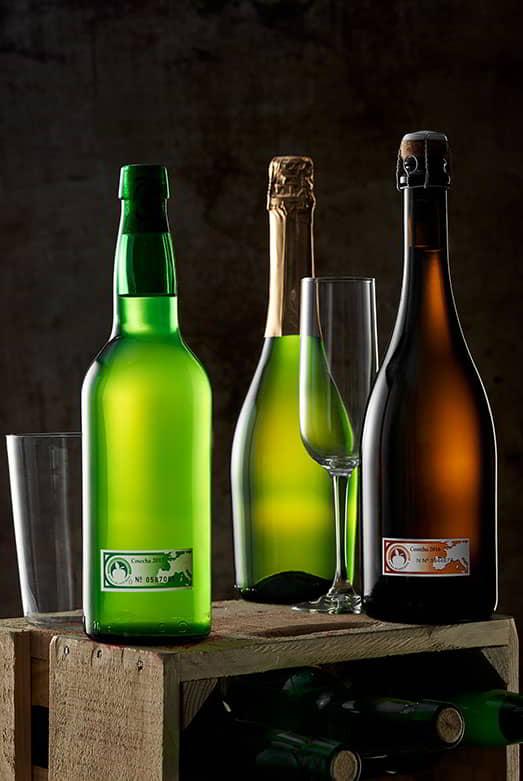
In 2024 the Asturian Cider Culture was declared Intangible Cultural Heritage by UNESCO. Unesco's recognition highlights an age-old tradition that has endured and evolved over time, reaching a level of deep rootedness in Asturias that is unparalleled in other producing regions. No other place has preserved cider culture like this land, where its consumption goes beyond the everyday to become a cultural symbol, present in folklore, literature, art, architecture and gastronomy.
This UNESCO recognition allows the rest of the world to discover and embrace a tradition that fosters a unique sense of enjoyment, camaraderie and sociability that only cider can inspire. Come to Asturias and practice cider tourism to check it out.

